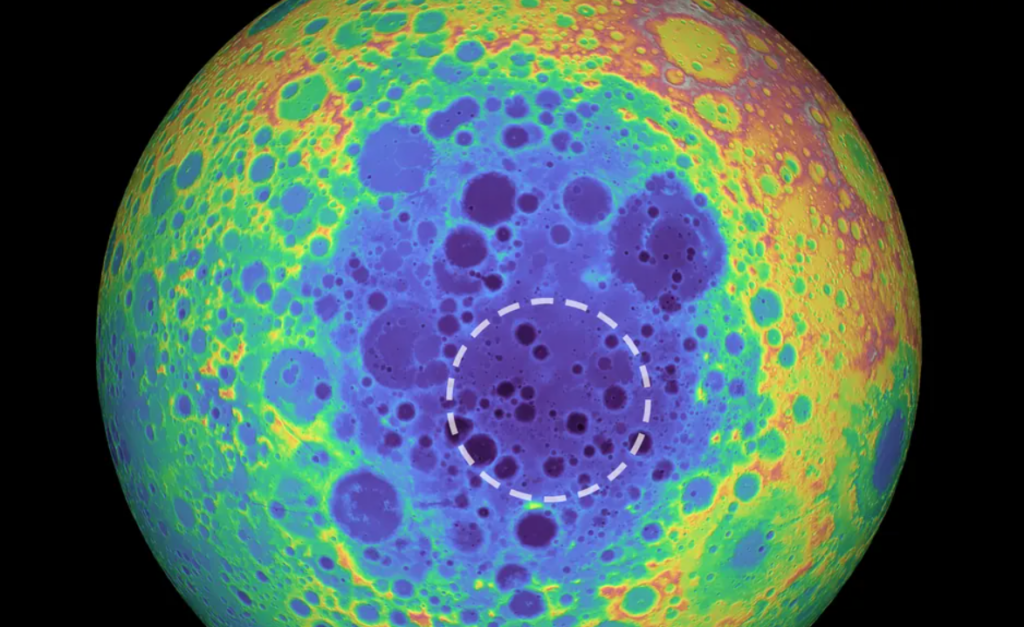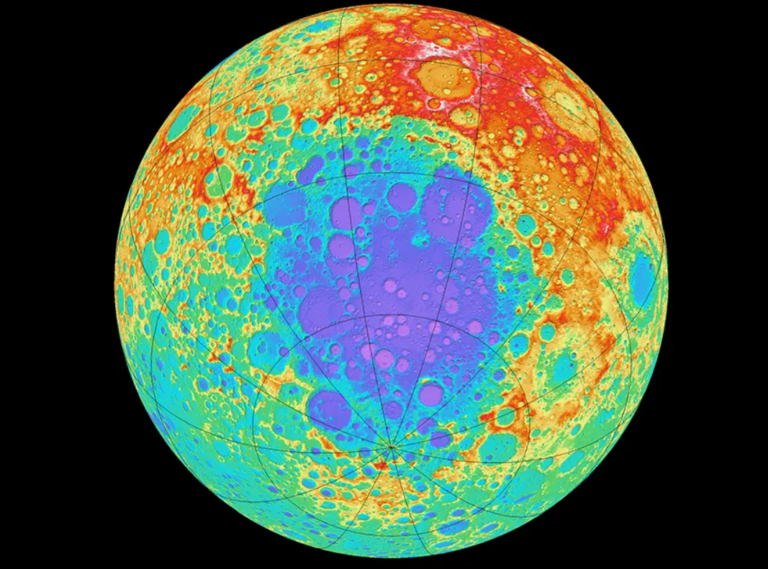Enormous Structure Uncovered Beneath the Moon’s Surface, Extending 300 Kilometers Deep
“Imagine taking a pile of metal five times larger than the Big Island of Hawaii and burying it underground.”
Analyzing the orbit data of the Moon, the planetary scientist have found an abundance of metallic mass that measures to about 2. up to 18 quintillion kilograms, and going over 300 kilometers deep. This hidden mass, discovered with help of GRAIL mission data, could be metal from the asteroid, which formed the crater or dense oxides from the Moon’s magma ocean that was present in the past. The lunar South Pole-Aitken Basin is the largest preserved crater in the solar System which opens the way of better understanding the Moon’s interior and its evolutionary histories.
The South Pole-Aitken Basin which is present at the bottom end of the Moon is one of the largest impact basins in the solar system. The region has thus emerged as a major research subject in the lunar exploration, and it has been included in the lunar landing of first indigenously developed spacecraft of India, NASA’s Artemis 3 the mission of landing astronauts at the south pole of the moon and most importantly the presence of a hidden mass beneath the surface of the moon.
Other planetary scientists discovered an object which they estimated weighed about 2. 18 quintillion kilograms going down to more than 300 kilometers (186 miles) into the Earth’s mantel. It is inferred to be made of the metal of the asteroid that formed the basin in the first place.
“It is easy to picture burying a mass of metal five times larger than Hawaii’s Big Island underground, but that is merely the tip of the ‘mantle’ iceberg of the unanticipated mass found,” said Peter B. James of Baylor University, who led the study.

This study relied on the information taken from NASA’s GRAIL mission that maps missile changes in the moon’s gravity that is information about its interior structure. The mass at the bottom of the ocean floor is enormous meaning that the floors of these basins dip by almost a kilometer (half a mile). The crater is about 2500 kilometer in size across meaning it has a huge gravitational field.
“When we integrated this information with topographical data acquired from the Lunar Reconnaissance Orbiter, we identified a relatively huge mass at several hundreds of miles from the surface of the South Pole-Aitken Basin. ” James said. “A possibility is that the metal settled in the basin from the asteroid which formed the basin is still present in the original mantle of the moon. ”
Simple simulations indicate impact of the asteroid, occurring approximately 4 billion years ago resulted in deposition of metal within the mantle layer instead of integrating it into the sphere of the core. On the other hand, the anomaly can made up of dense oxides that crystallized from the Moon’s magma ocean as it began to cool and freeze.
Thus, the South Pole-Aitken Basin remains of interest to different space organizations as it remains a good subject for analysis in order to gain insights with regard to the Moon’s interior and the influence of large impacts on the rocky planets. But even the south pole is not a singular actuality that has inexplicable subsurface formations. Large hot sources have also been identified below the Compton and Bel’kovich craters on the far side of the Moon.
The study was published in Geophysical Research Letters.
Do not forget to share your opinion with us to provide you with the best posts !




0 Comments